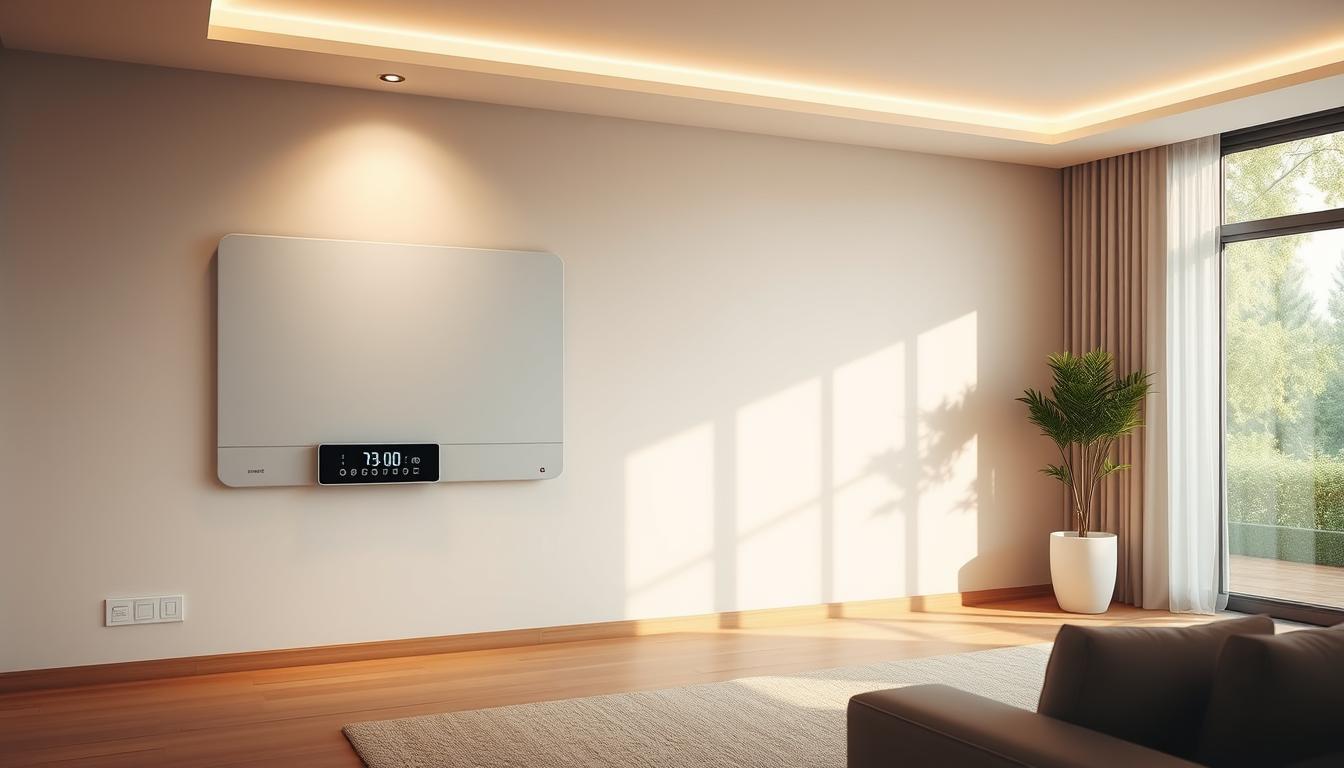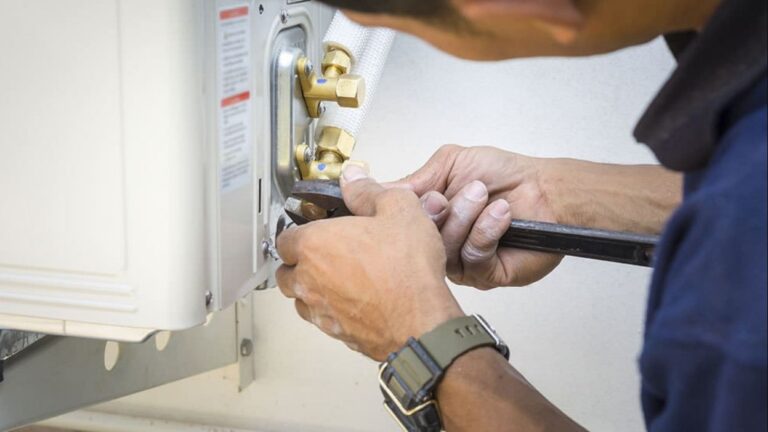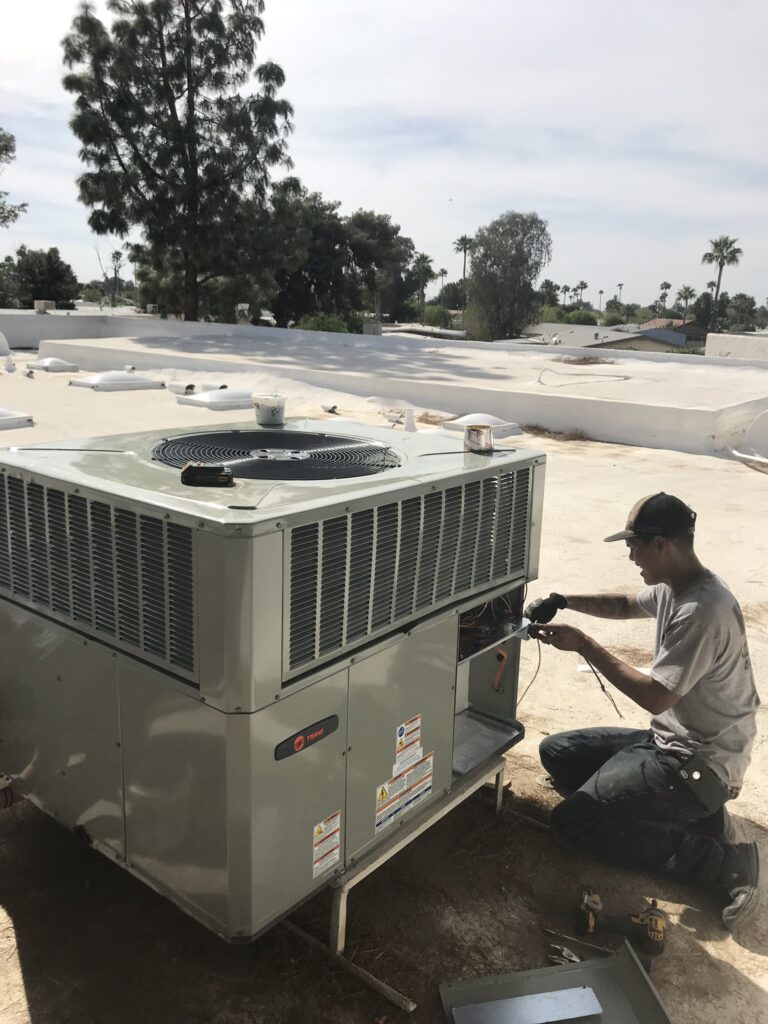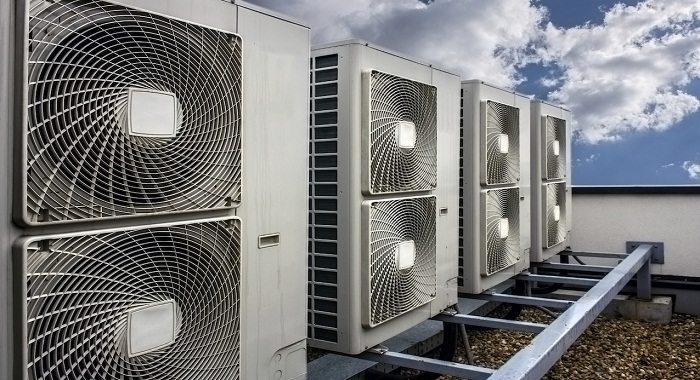Are Smart HVAC Systems Worth It? Pros, Cons & Features
The heating, ventilation, and air conditioning (HVAC) industry is undergoing a significant transformation with the advent of smart technology. Homeowners and building managers are increasingly considering upgrades to smart HVAC solutions to enhance energy efficiency and comfort.
As HVAC technology advances, it offers more than just temperature control; it provides a sophisticated system that can learn and adapt to a building’s or home’s specific needs. This not only improves the overall comfort but also optimizes energy consumption.
But are these advanced systems worth the investment? This guide will explore the key considerations, including benefits, drawbacks, and features, to help you make an informed decision about implementing smart HVAC solutions.
Key Takeaways
- Understanding the basics of smart HVAC technology and its growing popularity.
- Exploring how smart HVAC can transform traditional heating and cooling systems.
- Identifying the key benefits and drawbacks of smart HVAC upgrades.
- Learning about the features that make smart HVAC systems efficient and comfortable.
- Determining whether smart HVAC systems are a worthwhile investment for your home or building.
What Are Smart HVAC Systems?

Smart HVAC systems are at the forefront of innovation in climate control, offering enhanced performance and automation. These systems integrate advanced technology, such as the Internet of Things (IoT), to provide a more efficient and controlled indoor environment.
Definition and Basic Functionality
Smart heating, ventilation, and air conditioning systems utilize digital technology and connectivity to monitor and adjust heating, cooling, and air quality automatically. The basic functionality includes automated temperature regulation, remote access capabilities through mobile devices, and data collection for optimization. This means that users can control their HVAC systems from anywhere, making adjustments as needed to maintain a comfortable indoor climate.
The use of IoT technology allows these systems to be more adaptive and responsive to changing conditions, such as weather forecasts or occupancy levels. By leveraging advanced sensors and data analytics, smart HVAC systems can optimize their performance, reducing energy consumption and improving indoor air quality.
How Smart HVAC Systems Differ from Traditional Systems
Unlike traditional HVAC systems, which rely on manual controls and fixed settings, smart HVAC systems offer adaptive controls and learning capabilities. This allows them to adjust their operation based on various factors, including occupancy patterns, outdoor weather conditions, and the specific heating or cooling needs of different areas within a building.
Furthermore, smart HVAC systems are capable of extensive data collection, providing valuable insights into their operation and performance. This data can be used to further optimize the system, ensuring it operates at peak efficiency and effectiveness. By representing the evolution of climate control technology, sometimes referred to as “HVAC 4.0,” these systems integrate with other building systems, enhancing overall building management and comfort.
Key Components of Smart HVAC Systems
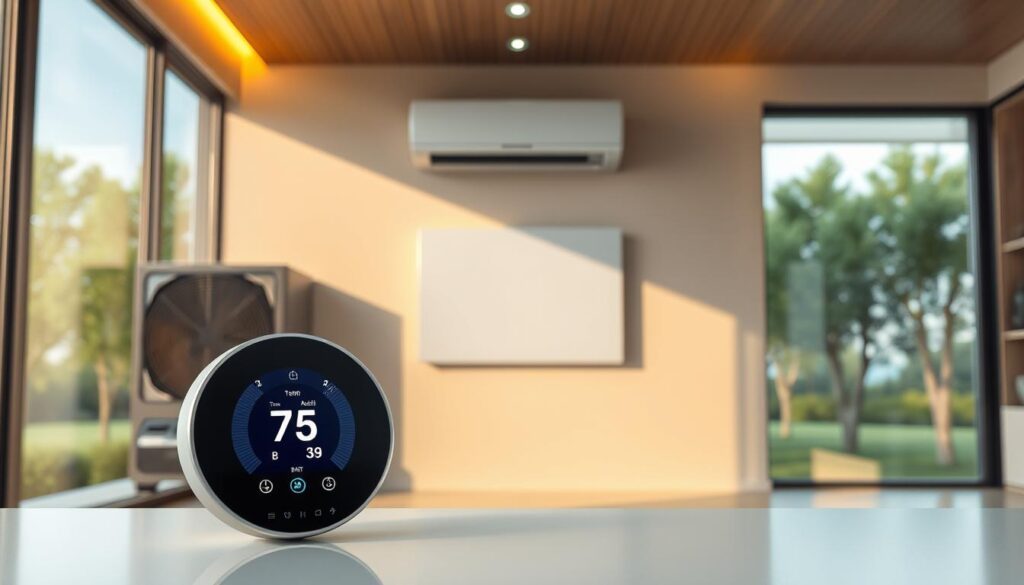
The effectiveness of smart HVAC technology is rooted in its key components. These components work together to create a comprehensive climate control ecosystem that is both efficient and responsive to the needs of the building’s occupants.
Smart Thermostats and Controls
Smart thermostats serve as the central control hub for smart HVAC systems, offering advanced learning capabilities and user-friendly interfaces. They can learn occupants’ preferences and adjust the temperature accordingly, ensuring optimal comfort while minimizing energy waste. You will want a pro to install your smart thermostat.
Sensors and Data Collection
Various sensors are deployed throughout a building, creating a network of data collection points. These sensors monitor temperature, humidity, occupancy, CO2 levels, and other factors, providing real-time data that helps optimize HVAC performance.
Mobile Integration and Remote Access
With mobile integration, users can control their HVAC systems remotely through smartphone apps and web interfaces. This feature allows for adjustments to be made from anywhere, ensuring that the building is always at the right temperature when occupants arrive.
Building Management System (BMS) Integration
Smart HVAC systems integrate with broader Building Management Systems (BMS) to coordinate with other building functions. This integration enables a holistic approach to building management, optimizing overall performance and efficiency.
By combining these key components, smart HVAC systems create a sophisticated climate control ecosystem. This ecosystem not only enhances comfort and reduces energy consumption but also provides valuable insights into building performance through data analysis.
Smart HVAC System Features
The integration of advanced technologies has transformed traditional HVAC systems into smart, efficient, and responsive climate control solutions. Smart HVAC systems incorporate various innovative features that enhance their functionality and efficiency.
Thermal and CO2 Sensors
Thermal sensors can detect temperature variations across different zones in a building, allowing for precise temperature control. CO2 sensors monitor the levels of carbon dioxide, which can rise with occupancy and impact air quality. These sensors are crucial for maintaining a healthy indoor environment by ensuring that the air remains fresh and comfortable for occupants.
Occupancy and Light Sensors
Occupancy sensors detect the presence of people in a space, typically through motion detection. Light sensors adjust lighting and HVAC settings based on the ambient light available. This integration optimizes energy use and enhances comfort by ensuring that heating, cooling, and lighting are adjusted according to the actual needs of the space.
Demand Controlled Ventilation (DCV)
DCV systems adjust the fresh air intake based on occupancy levels, ensuring good air quality while minimizing energy consumption. This feature is particularly beneficial in spaces with variable occupancy, as it prevents unnecessary ventilation when the space is not fully occupied.
Variable Speed Fans and VRF Systems
Variable speed fans adjust their speed according to the current conditions or occupancy, providing precise control and reducing energy waste. Variable Refrigerant Flow (VRF) systems offer zoned operation, quiet performance, and significant energy savings. These systems are designed to provide customized comfort settings in different areas of a building, enhancing overall occupant satisfaction.
By incorporating these advanced features, smart HVAC systems provide a responsive and efficient climate control solution that can be tailored to the specific needs of different areas within a building. The result is improved comfort, reduced energy consumption, and a healthier indoor environment.
- Comprehensive monitoring of temperature and air quality through thermal and CO2 sensors
- Optimization of HVAC operation based on occupancy and ambient light levels
- Adjustment of fresh air intake according to occupancy for improved air quality and energy efficiency
- Precise temperature control and energy savings through variable speed fans and VRF systems
The Benefits of Smart HVAC Systems
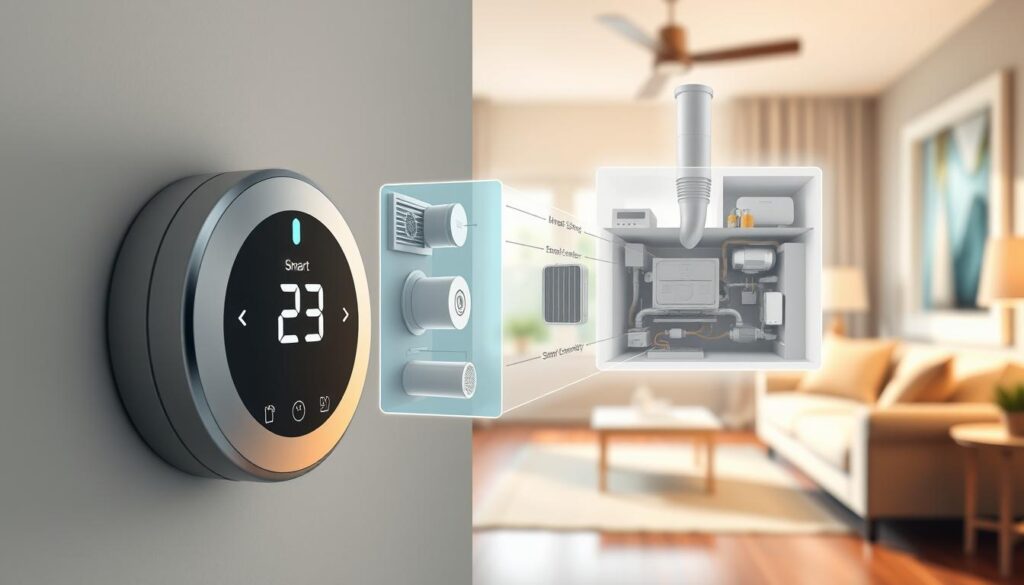
The advantages of smart HVAC systems are multifaceted, ranging from energy efficiency to improved comfort. These systems are designed to optimize the performance of heating, ventilation, and air conditioning equipment, leading to significant benefits for both residential and commercial buildings.
Energy Efficiency and Cost Savings
Smart HVAC systems optimize energy usage through precise control and automation, resulting in significant cost savings, typically ranging from 15-30% over traditional systems. By leveraging advanced technologies such as sensors and data analytics, these systems can adjust their operation based on real-time conditions, reducing unnecessary energy consumption.
Improved Comfort and Air Quality
These systems enhance comfort by maintaining consistent temperatures, eliminating hot/cold spots, and adjusting to occupancy patterns. Moreover, smart HVAC systems continuously monitor air quality, detecting pollutants and adjusting ventilation accordingly, thus providing a healthier indoor environment.
Remote Monitoring and Diagnostics
With remote monitoring capabilities, facility managers can track system performance in real-time, allowing for immediate response to issues. This feature is particularly beneficial for commercial buildings, where it can reduce downtime and improve overall system reliability.
Predictive Maintenance Capabilities
Smart HVAC systems utilize data analytics to predict potential failures before they occur, enabling proactive maintenance. This predictive capability can significantly reduce maintenance costs and extend the lifespan of HVAC equipment.
| Benefit | Description | Impact |
|---|---|---|
| Energy Efficiency | Optimized energy usage through automation and real-time data | Cost savings of 15-30% |
| Improved Comfort | Consistent temperatures and adjusted ventilation | Enhanced occupant comfort and health |
| Remote Monitoring | Real-time system performance tracking | Immediate issue response and reduced downtime |
| Predictive Maintenance | Data-driven maintenance scheduling | Reduced maintenance costs and extended equipment lifespan |
As highlighted by industry experts, “Smart buildings evaluate existing data to anticipate future failures of HVAC equipment, thereby reducing the likelihood of unexpected breakdowns.” This proactive approach to HVAC management underscores the value of integrating smart technologies into building operations.
Potential Drawbacks of Smart HVAC Systems
Before investing in a smart HVAC system, it’s crucial to understand the potential drawbacks, including initial costs and privacy issues. While these systems offer numerous benefits, there are several factors to consider that might impact your decision.
Initial Investment Costs
One of the primary drawbacks of smart HVAC systems is the higher initial investment compared to traditional HVAC systems. The cost can vary widely depending on the size of the building and the complexity of the system.
| Building Size | System Cost | Installation Cost |
|---|---|---|
| Small Home (1,000 sqft) | $5,000 – $10,000 | $2,000 – $5,000 |
| Medium Office (10,000 sqft) | $20,000 – $50,000 | $5,000 – $15,000 |
| Large Commercial (50,000 sqft) | $50,000 – $200,000 | $15,000 – $50,000 |
Installation and Integration Challenges
Installing smart HVAC systems can be complex, especially in existing buildings. Retrofitting old infrastructure with new technology can be challenging and may require additional modifications to the building’s electrical and ductwork systems.
As John Smith, HVAC Expert, notes, “Integrating smart HVAC systems with existing building management systems can be a complex task, requiring significant expertise and resources.”
Privacy and Security Concerns
Smart HVAC systems collect data on occupancy patterns and usage habits, raising privacy concerns. Moreover, connected systems can be vulnerable to cyber threats if not properly secured.
“The increasing connectivity of HVAC systems introduces new security risks that must be addressed through robust encryption and regular software updates.”
To mitigate these risks, manufacturers are implementing advanced security measures, including encryption and secure data storage practices.
Smart HVAC Systems in Different Settings
The versatility of smart HVAC systems allows them to be effectively utilized in a variety of settings, from residential homes to commercial buildings and even entire cities. As the world’s population continues to urbanize, the need for efficient and sustainable heating, ventilation, and air conditioning solutions becomes increasingly pressing.
Residential Applications
In residential settings, smart HVAC systems offer homeowners the ability to personalize their comfort settings, leading to enhanced living experiences. These systems can be integrated with other smart home devices, allowing for seamless control and energy efficiency. For instance, smart thermostats can learn a household’s schedule and preferences to optimize heating and cooling, thereby reducing energy consumption.
Commercial and Office Buildings
Commercial and office buildings benefit significantly from smart HVAC systems, particularly in optimizing space usage and reducing operating costs. By leveraging occupancy sensors and data analytics, building managers can ensure that HVAC resources are allocated efficiently, improving employee productivity and comfort. Smart HVAC systems can adjust temperatures based on occupancy patterns, leading to significant energy savings.
As John Smith, a renowned HVAC expert, once said, “The future of HVAC lies in its ability to adapt to the needs of the occupants, making smart HVAC systems a game-changer for commercial buildings.” This adaptability is crucial for creating comfortable and productive work environments.
Smart Cities and Urban Planning
On a larger scale, smart HVAC systems play a critical role in smart city initiatives and urban sustainability efforts. By optimizing HVAC systems across city-wide infrastructure, cities can reduce overall energy consumption, lower carbon emissions, and improve air quality. This holistic approach to HVAC management is essential for creating sustainable urban environments.
For example, cities can implement city-wide HVAC optimization strategies that not only reduce energy consumption but also contribute to a healthier environment for their citizens. As the United Nations notes, with 55% of the world’s population living in cities—a number expected to rise to 68% by 2050—the importance of smart HVAC systems in urban planning cannot be overstated.
Implementation Considerations
Before investing in a smart HVAC system, it’s crucial to assess your specific needs and building requirements. This assessment will help determine the most suitable smart HVAC solutions for your situation.
Assessing Needs and Building Requirements
To evaluate your needs, consider factors such as building size, usage patterns, existing infrastructure, and climate considerations. A thorough assessment will enable you to identify the most beneficial features and capabilities for your smart HVAC system.
Working with HVAC Professionals
It’s essential to work with qualified HVAC professionals who specialize in smart systems. When selecting a contractor, look for experience in smart HVAC installation and programming. Ask potential contractors about their experience with similar projects and their approach to integrating new smart components with existing equipment.
Integration with Existing Systems
When integrating new smart components with existing HVAC equipment, consider a phased implementation approach to allow for gradual upgrades. Ensure proper system setup and optimization through thorough commissioning processes.
To ensure long-term system performance, create a maintenance plan. Regular maintenance will help prevent issues and maintain the efficiency of your smart HVAC system.
The Future of Smart HVAC Technology
With the rising costs of natural resources and increasing regulatory pressures, the future of smart HVAC systems is crucial to the global economy. As technology continues to evolve, we can expect to see even more innovative solutions emerge.
The smart HVAC industry is expected to witness significant advancements in areas like artificial intelligence and machine learning, leading to enhanced system performance and energy efficiency. Predictive analytics will play a key role in optimizing HVAC systems, allowing for real-time monitoring and maintenance.
Future smart thermostats will offer compatibility with a wider range of climate-control technologies, including geothermal systems and heat pumps. This increased compatibility will drive the adoption of smart HVAC solutions, particularly in new construction projects where energy efficiency is a top priority.
As smart HVAC technology continues to advance, it is likely to become a critical component of sustainable building management. Companies are investing heavily in research and development to meet growing market demands, driven by increasing energy costs and climate concerns.

